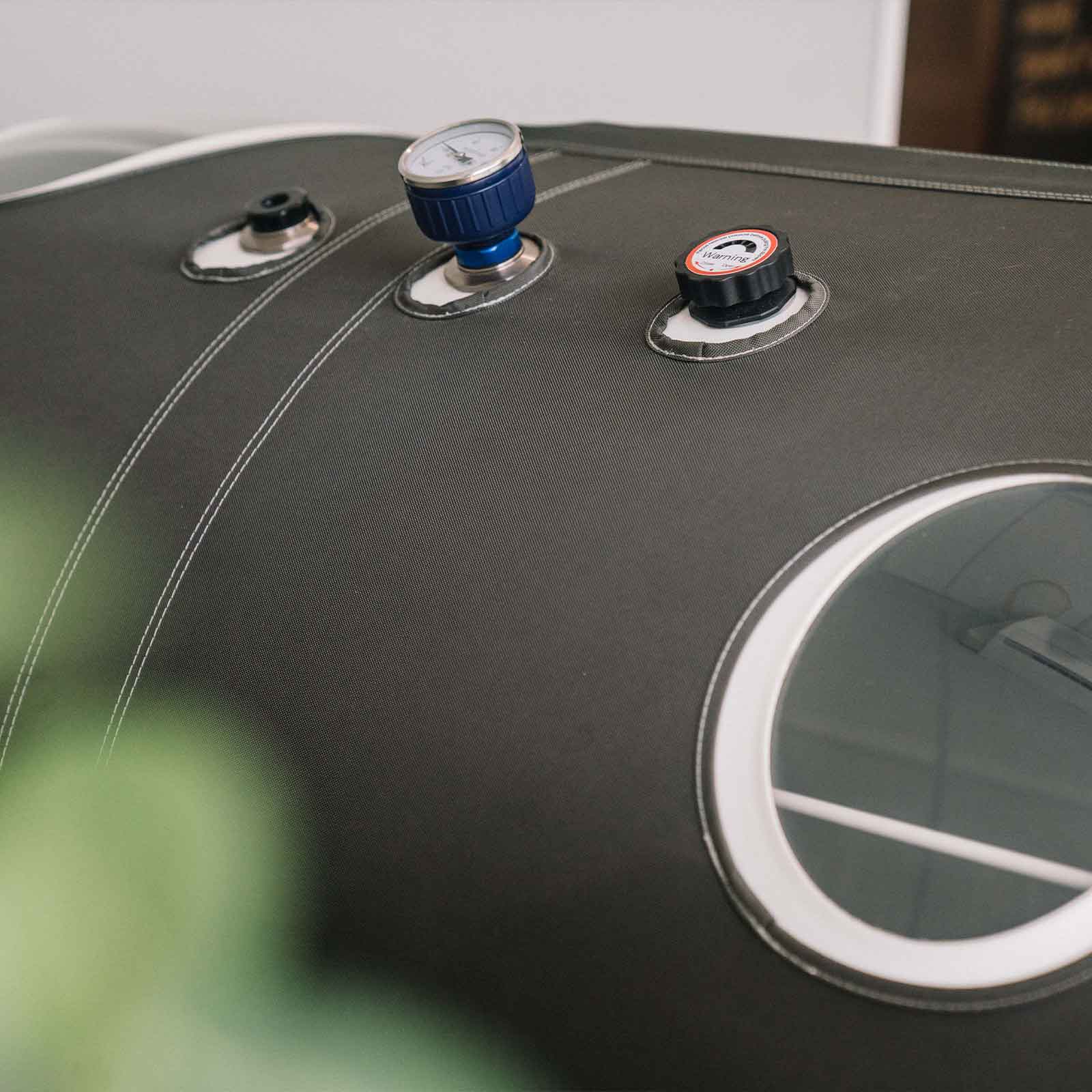"Team are always very friendly and accommodating. It’s always very clean and even during busy hours."
- Raissa Oliveira"P3 accelerates my recovery for high training & race preparation. The team & community are so supportive."
- Trent Gardiner"Great place to relax, unwind & friendly team. I come several times a week, there's something for everyone."
- Adrian Finch"P3 has changed my life. P3 feels like a second family. More than a recovery centre, P3 is a community."
- Brooke Coleman-Oakes"I had such a great time, the team were so helpful. A very welcoming vibe that made you want to just be there."
- Roxane Carbery


By elevating oxygen concentrations, this therapy is known to accelerate wound repair, diminish inflammation, bolster blood flow to compromised regions, and assist in the body’s detoxification. It’s a supportive measure for managing lingering discomfort from chronic conditions and expedites recuperation post-surgery or from injuries. Overall, Hyperbaric Oxygen Therapy presents a non-intrusive approach for individuals intent on enhancing their wellbeing and reinforcing their body’s intrinsic healing capabilities.
Increased oxygen in the body can aid in the healing process of wounds, including chronic and non-healing wounds.
Hyperbaric oxygen therapy can improve endurance, speed up recovery time, and reduce muscle soreness in athletes.
Hyperbaric oxygen therapy has been shown to reduce symptoms of TBI (traumatic brain injury) such as headaches, memory loss, and depression.
Increased oxygen levels can speed up the healing process for broken bones and promote the growth of new bone tissue.
Hyperbaric oxygen therapy can reduce inflammation, leading to less pain and improved overall health.
Oxygen therapy can enhance the immune system, helping the body fight off infections and illnesses.
Hyperbaric oxygen therapy can improve cardiovascular health by increasing blood flow and reducing oxidative stress.
Oxygen therapy can increase energy levels and mental alertness, leading to improved overall well-being.


Whether you’re an athlete seeking a performance boost, or a person recovering from an injury, a hyperbaric chamber may provide the solution you need for improved health and wellbeing. So why wait? Invest in yourself and experience the benefits of hyperbaric oxygen therapy today.
Heart rate variability (HRV) is more than a health metric; it's a profound indicator of your stress resilience and overall wellbeing. Learn the essentials of HRV and practical tips to enhance it for a healthier life.
In today’s fast-paced world, managing stress is crucial for maintaining mental and physical health. Explore five lifestyle hacks, from meticulous planning to amplifying your greens intake, to boost your stress resilience effectively.
Struggling to improve sleep quality? Uncover expert tips and strategies to enhance your sleep quality, ensuring better recovery, improved cognitive function, and a stronger immune system. Dive into our guide for a restful night and a productive day.
Discover the optimal hydrotherapy protocol to boost your sports recovery. Learn how the strategic use of warm and cold baths can elevate athletic performance and recovery.
Pain-free living with Hyperbaric Oxygen Therapy
The anti-inflammatory magic of Hyperbaric Oxygen Therapy
The Science Behind the Cold Plunge: Your Ultimate Ally in Post-Exercise Recovery!
Unlocking the Power of Cold Water Immersion: Boosting Brown Fat for Weight Loss
For athletes, fitness enthusiasts, and those seeking relief from the discomforts of intense physical activity, the quest for effective recovery strategies is never-ending.
In the bustling world of health and wellness, there's a buzz surrounding a unique therapy that holds the promise of revitalising our bodies from the inside out—Hyperbaric Oxygen Therapy (HBOT).
A hyperbaric chamber is a pressurised chamber designed to deliver 100% oxygen to the body. The increased pressure in the chamber allows the body to absorb more oxygen, which can then be carried to tissues and organs. This increased oxygen saturation can help to speed up the healing process for certain conditions such as non-healing wounds, traumatic brain injury, and decompression sickness.
Hyperbaric chambers come in a variety of sizes, from small portable units to large hospital-grade chambers. Treatment sessions typically last between 1-2 hours and are performed by trained professionals. Although hyperbaric oxygen therapy is generally considered safe, it may not be suitable for individuals with certain medical conditions such as lung disease, middle ear problems, or some types of cancer.
A hyperbaric chamber works by increasing the amount of oxygen that the body can absorb and deliver to tissues and organs. This is achieved by pressurising the chamber to levels higher than atmospheric pressure, which allows the body to take in more oxygen than it would under normal conditions. The increased oxygen saturation can help to speed up the healing process for certain conditions such as non-healing wounds, traumatic brain injury, and decompression sickness.
During a treatment session, the individual lies down in the chamber while 100% oxygen is delivered through a mask or hood. The increased pressure helps to force oxygen into the bloodstream, which can then be carried to tissues and organs that may be deprived of oxygen due to injury or illness. The increased oxygen saturation can also stimulate the growth of new blood vessels, which can improve circulation and aid in the healing process.
Hyperbaric oxygen therapy is typically administered in a series of treatments, with each session lasting between 1-2 hours. The number of treatments necessary depends on the individual and their condition, and it is important to consult with a healthcare professional to determine the appropriate treatment plan. Although hyperbaric oxygen therapy is generally considered safe, it may not be suitable for individuals with certain medical conditions, so it is important to discuss any concerns with a healthcare professional before starting therapy.
Hyperbaric oxygen therapy has been used to treat a variety of conditions, and individuals with a range of health issues can benefit from treatment in a hyperbaric chamber. Some of the most common conditions that can benefit from hyperbaric oxygen therapy include:
Non-healing wounds: By increasing the amount of oxygen in the bloodstream, hyperbaric oxygen therapy can improve circulation and aid in the healing process of wounds that have not responded to traditional treatment methods.
Traumatic brain injury: The increased oxygen saturation delivered by a hyperbaric chamber can help to reduce inflammation and promote healing in individuals with traumatic brain injury.
Decompression sickness: Hyperbaric oxygen therapy can help to alleviate symptoms of decompression sickness, a condition that occurs when divers ascend too quickly from deep water.
Radiation injury: Individuals who have received radiation therapy for cancer may benefit from hyperbaric oxygen therapy, as the increased oxygen saturation can help to reduce the risk of tissue damage.
Carbon monoxide poisoning: Hyperbaric oxygen therapy can help to reduce the risk of long-term damage from carbon monoxide poisoning by increasing the amount of oxygen in the bloodstream.
It is important to note that hyperbaric oxygen therapy may not be suitable for individuals with certain medical conditions, such as lung disease, middle ear problems, or some types of cancer. It is also important to discuss any concerns with a healthcare professional before starting therapy to ensure it is safe and appropriate for your individual needs.
Hyperbaric chamber treatments typically last between 1-2 hours. The exact length of each treatment session depends on the individual and their condition, and can be determined by a healthcare professional. For some conditions, multiple treatment sessions may be necessary in order to achieve the desired results. The number of treatments necessary can range from a few to several dozen, and is determined based on the individual’s specific needs and the severity of their condition.
It is important to note that hyperbaric oxygen therapy is a non-invasive treatment option, and individuals typically remain awake and alert during the entire treatment session. During the session, the individual lies down in the chamber while 100% oxygen is delivered through a mask or hood. The increased pressure helps to force oxygen into the bloodstream, which can then be carried to tissues and organs that may be deprived of oxygen due to injury or illness.
Hyperbaric chambers are generally considered safe for individuals who are appropriate candidates for hyperbaric oxygen therapy. However, as with any medical treatment, there are potential risks and side effects associated with the use of a hyperbaric chamber. Some of the most common side effects include ear pain, pressure in the ears, and sinus pain. These side effects are usually mild and can be treated with over-the-counter pain medication.
In rare cases, individuals with certain medical conditions may not be suitable candidates for hyperbaric oxygen therapy. These conditions may include lung disease, middle ear problems, or certain types of cancer. It is important to discuss any concerns with a healthcare professional before starting therapy to ensure it is safe and appropriate for your individual needs.
As with any medical treatment, there can be potential side effects associated with the use of a hyperbaric chamber. Some of the most common side effects include:
Ear pain: The increase in pressure inside the hyperbaric chamber can cause pressure in the middle ear, leading to ear pain.
Sinus pain: The increase in pressure can also cause pain in the sinuses.
Dizziness: Some individuals may experience dizziness or lightheadedness during or after a treatment session.
Nausea: A small number of individuals may experience nausea during or after a treatment session.
These side effects are usually mild and can be treated with over-the-counter pain medication. In rare cases, individuals may experience more serious side effects, such as oxygen toxicity, which can cause lung damage, or a severe allergic reaction to the oxygen.
The number of treatments you need in a hyperbaric chamber will depend on your individual situation and condition. A healthcare professional will be able to advise you on how many treatments you’ll need to achieve the desired results. This can vary greatly, with some individuals only needing a few treatments while others may need several dozen.
It’s important to keep in mind that hyperbaric oxygen therapy is a non-invasive option and typically requires multiple treatment sessions over a period of time. The length of each session and the total number of treatments you need will be determined by your healthcare professional, based on your specific needs and condition.
Whether you can fly after a hyperbaric chamber treatment depends on the individual and their condition. Generally, it is safe to fly after a hyperbaric chamber treatment, however, some individuals may need to wait a certain period of time before flying.
It is important to discuss any travel plans with your healthcare provider before and after a treatment session. They may advise you to avoid flying if you are experiencing any discomfort or if your condition requires careful monitoring.
{{body}}
View More...